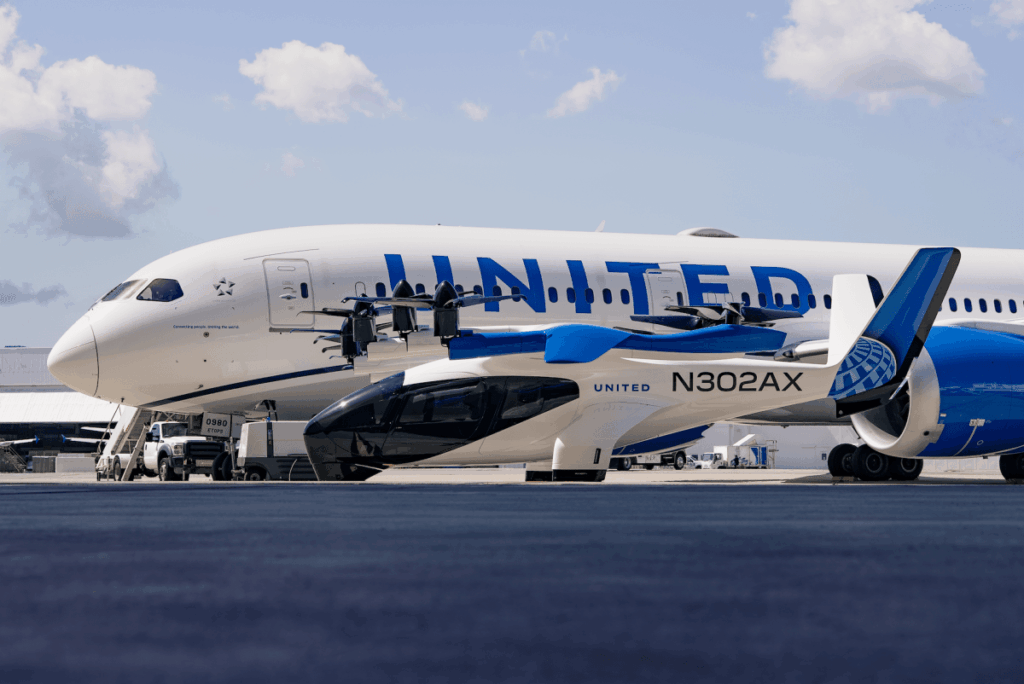New York City is one of those places in the world where you can get a dollar slice at 2 a.m. or have a burger delivered in less than 30 minutes, but you’ll still spend two hours crawling down the highway to catch a flight.
Archer Aviation wants to change that with air taxis that it envisions flying passengers from Manhattan to nearby airports within 15 minutes.
The startup on Thursday unveiled its proposed air taxi network for New York City in partnership with United Airlines, which would allow passengers to tack on an Archer ride to their traditional airline tickets.
“We’re starting with nine core nodes,” Adam Goldstein, co-founder and CEO of Archer, told me during an interview at Casa Cipriani, a members-only club at the bottom tip of Manhattan, watching helicopters land at the Downtown Skyport.
“So you have the three big international airports — JFK, LaGuardia, Newark,” Goldstein continued. “You have the three big heliports, [including] the Downtown Skyport, and then the east and west side heliports. And then the three big regionals — Teterboro, Westchester, and Long Island Republic.”

Archer has shared a similar vision for air taxi networks in cities like Los Angeles. The company is still waiting on the Federal Aviation Administration to approve its aircraft — a five-seat eVTOL (electric vertical takeoff and landing vehicle) dubbed Midnight — before it can even begin testing the routes it has planned.
Archer also still needs to get a pilot into one of its aircraft to test-fly it. So far, the company has only flown the plane autonomously with no humans inside. Its competitors, Joby Aviation and Beta Technologies, have both piloted flights.
Goldstein seemed hopeful that Archer would achieve the necessary certifications in 2026, telling TechCrunch that it would have an update about piloted flights at its next earnings call. The company went public in 2021 via a special-purpose acquisition merger, and has raised $3.36 billion to date, per PitchBook, via public and private fundraises.
In the meantime, Archer is laying the groundwork, setting up infrastructure and operations. For that, partnerships are essential.
In NYC, United will help with aircraft storage, maintenance, charging setup, and setting up vertiports (landing pads for eVTOLs) at airports. Archer has also teamed up with the fixed-base operators that run the Manhattan helipads — Atlantic Aviation, Signature, and Modern Aviation — which, Goldstein says, will give Archer passenger access and help set up the charging infrastructure.
“What makes New York very compelling is it’s the No. 1 helicopter commuting city in the world, outside of São Paulo,” Nikhil Goel, Archer’s chief commercial officer, said. “You don’t have to squint very hard to imagine any of these helicopters that are flying by on the Hudson simply replacing them with one of our aircraft. The routes are already there. The air traffic already knows how to work with them. The FBOs and the landing facilities are already there. So there’s no systemic changes that are necessary.”
Archer’s plan is to start small, bringing up to five aircraft to NYC — and other cities — to practice running the routes before launching. Ten to 20 years down the line, the goal is to fly hundreds of aircraft across several cities. Archer last month began constructing Midnights at its production facility in Georgia that it built in partnership with strategic investor Stellantis. It plans to build 650 aircraft annually by 2030.
Aside from NYC and LA, Archer also plans to launch in San Francisco and Miami, but the timeline is still dependent on FAA certification, and the company hasn’t picked its first U.S. launch city.
The company also has plans to launch an air taxi service in Abu Dhabi, where regulations are less strict, later this year. Goldstein said the proposed network for NYC gives people a vision they can understand.
“We’re hoping people look at [Abu Dhabi] and say, ‘Oh, it’s real. How is New York gonna work?’”


